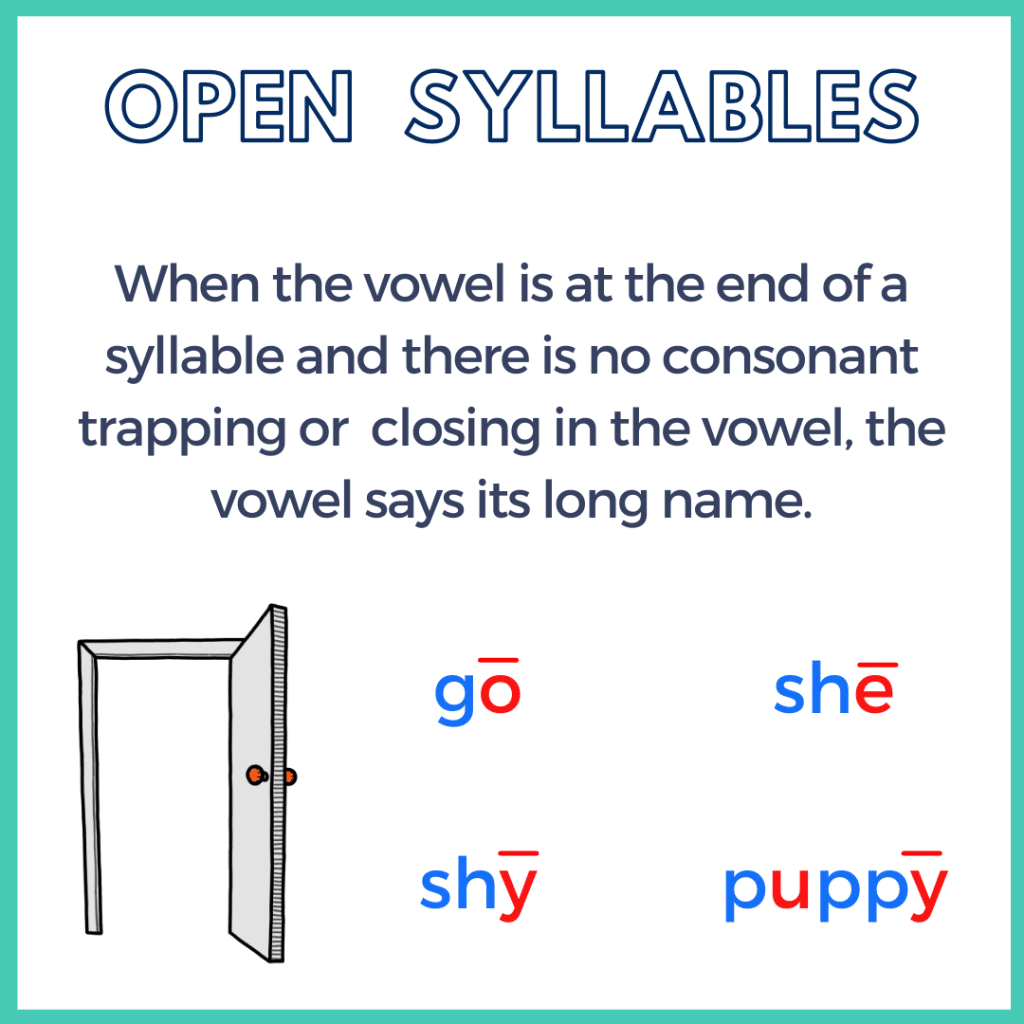Many language learners find mastering pronunciation challenging, especially when encountering unfamiliar syllable structures.
Open syllables, which end in a vowel sound, are common in various languages but can be tricky for non-native speakers to recognize and pronounce correctly. This difficulty often leads to pronunciation errors and reduced confidence in speaking.
Fear not! Understanding open syllables across different languages can significantly improve pronunciation and language proficiency.
This blog post will provide a clear, easy-to-follow overview of open syllables in various languages, helping you become a more confident and accurate speaker.
We’ll explore open syllables in Italian, Dutch, Japanese, and Chinese, comparing their structures and roles in each language.
Introduction to Open Syllables

An open syllable is a fundamental concept in phonetics and linguistics. It refers to a syllable that ends with a vowel sound, allowing the vowel to be pronounced longer.
This structure contrasts with closed syllables, which end in a consonant sound. Open syllables play a key role in shaping the sound patterns of many languages.
For instance, in English, words like “go,” “she,” and “me” contain open syllables. Similarly, Spanish words such as “no,” “lo,” and “mi” showcase this syllable type.
Understanding open syllables helps learners grasp pronunciation rules and improve their speaking skills across various languages.
Open Syllables in English
Open syllables in English have two main features:
- They end in a vowel sound
- The vowel is typically long
Impact on Pronunciation and Meaning
1. Pronunciation
- Long vowel sounds: In open syllables, vowels are usually pronounced as their “name” sound. For example, “no” has a long ‘o’ sound, and “me” has a long ‘e’ sound.
- Intonation and stress: Open syllables often influence word stress patterns. In words like “music” (mu-sic), the open syllable “mu” typically receives stress, affecting the word’s rhythm.
2. Meaning
- Minimal pairs: Open syllables can create meaning differences in similar-looking words. Compare “hop” (closed syllable) with “hope” (open syllable) – a single letter changes both pronunciation and meaning.
- Clarity: Proper use of open syllables helps in clearer communication. Mispronouncing open syllables as closed can lead to misunderstandings or confusion.
Open Syllables in Romance Languages
1. Spanish
Examples and Usage: Spanish features many open syllables in everyday speech. Common examples include words like “no,” “la,” and “me.” Open syllables are also frequent in verb endings, such as “habla” (speaks), “come” (eats), and “vivo” (I live).
Phonetic Patterns: Spanish open syllables have a consistent pronunciation, with vowels always sounding the same. This consistency helps make Spanish pronunciation more clear. The language’s preference for open syllables contributes to its syllable-timed rhythm, giving Spanish distinctive flow and cadence.
2. Italian
Characteristics and Examples: Italian also features many open syllables. Common examples include “ma” (but), “no” (no), “si” (yes), and “ti” (you). Open syllables are prevalent in everyday words like “bambino” (child), “carino” (cute), and “bello” (beautiful).
Influence on Language Structure: The prevalence of open syllables contributes to Italian phonetic simplicity, making pronunciation quite straightforward. Many Italian words are formed with open syllables, which aids in fluid speech and clarity.
3. French
Usage in Spoken and Written Forms: In French, open syllables are frequent in everyday conversation, such as “ma” (my), “tu” (you), and “le” (the). They’re also common in verb conjugations and pronouns, like “mange” (eat) and “parle” (speak).
Comparison with Closed Syllables: Open syllables in French typically have a clear, pronounced vowel sound, while closed syllables may alter vowel pronunciation. This contributes to the fluid, continuous sound of spoken French.
Open Syllables in Germanic Languages
1. German
- Examples and Significance: Open syllables are common in German, with examples like “du” (you), “so” (so), and “die” (the). They’re often found in verb forms such as “gehen” (to go), “sagen” (to say), and “leben” (to live). Open syllables play a key role in German morphology, frequently appearing in inflectional verbs and adjective endings.
- Role in Language Rules: Open syllables typically indicate a long vowel sound in German. While German favors closed syllables, open syllables are important in certain word formations. They also impact spelling conventions, influencing the use of double consonants and vowel placement.
2. Dutch
- Phonetic Characteristics: Dutch also features open syllables, with common examples including “de” (the), “ze” (she/they), and “nu” (now). Open syllables in Dutch generally result in long vowel sounds, maintaining consistency in pronunciation. These syllables also impact the use of diphthongs and the lengthening of vowels in Dutch phonology.
- Impact on Language Learning: Recognizing open syllables helps learners improve their Dutch pronunciation and fluency. Understanding open syllables aids in mastering Dutch orthography and enhancing spelling and reading skills. This awareness also improves listening comprehension and accuracy.
Open Syllables in Asian Languages
1. Japanese
- Use in Hiragana and Katakana: Open syllables are fundamental to the writing system in Japanese. Hiragana consistently represents open syllables, such as あ (a), い (i), う (u), え (e), お (o). Katakana follows a similar pattern, with ア (a), イ (i), ウ (u), エ (e), オ (o). Both scripts use open syllables extensively, which helps maintain phonetic consistency in the language.
- Examples in Everyday Language: Open syllables are common in everyday Japanese words. For instance, “たべる” (taberu – to eat), “みる” (miru – to see), and “さけ” (sake – alcohol) all use open syllables. Loanwords are often adapted into open syllable structures, like “テレビ” (terebi – television) and “コンピュータ” (konpyūta – computer). Simple open syllable structures are also prominent in children’s early language learning.
2. Mandarin Chinese
- Phonetic Structure: In Mandarin Chinese, syllables typically consist of an initial consonant and a final, which can be an open syllable. Common examples include “ma,” “li,” and “guo.” Open syllables in Mandarin often involve pure vowel sounds, contributing to the language’s distinct tonal quality.
- Role in Tonal Pronunciation: Open syllables are crucial for tonal variations that differentiate meanings in Mandarin. For instance, “ma” can mean mother (妈), hemp (麻), horse (马), or scold (骂) depending on the tone. The open syllable structure helps maintain the distinctiveness of tones, which is essential for comprehension.
Open Syllables in Indigenous Languages
- Navajo: The Navajo language often uses open syllable structures. Examples include “hózhǫ́” (beauty) and “shash” (bear). Navajo words typically have a predominance of open syllables, contributing to the language’s unique sound.
- Maori: The language of New Zealand’s Indigenous people frequently uses open syllables. Words like “aroha” (love) and “whenua” (land) showcase the simple CV (consonant-vowel) structure common in the language.
- Hawaiian: Hawaiian consistently uses open syllables, each ending in a vowel. This pattern is evident in well-known words like “aloha” (hello) and “mahalo” (thank you).
These examples highlight how open syllables play a key role in shaping the phonetic character of many indigenous languages.
Phonetic and Cultural Significance
- Phonetic Significance: Open syllables in indigenous languages often lead to smoother, more fluid speech patterns. The clear vowel sounds at the end of syllables make these languages more accessible to learners, simplifying pronunciation.
- Cultural Significance: Open syllables contribute to the musicality and memorability of oral histories and stories, which are crucial in many indigenous cultures. The simplicity of syllable structure also aids in language revitalization efforts, making it easier for new generations to learn and preserve their ancestral languages.
Comparative Analysis
1. Similarities and Differences Across Languages
When examining open syllables across various languages, we find similarities and differences in their usage and structure.
- Similarities: Open syllables appear in many languages worldwide, indicating a common phonetic feature. They often result in long vowel sounds and contribute to fluid speech patterns. Many languages, especially those with syllabic writing systems like Japanese, favor open syllables for their simplicity and ease of pronunciation.
- Differences: Despite these commonalities, the formation and use of open syllables vary significantly between languages. For instance, while Japanese and Spanish consistently use open syllables, English and German have a mix of open and closed syllables. The cultural importance and usage of open syllables also differ, impacting linguistic traditions and oral histories in unique ways across cultures.
2. Phonetic Patterns and Exceptions
- Phonetic Patterns: Open syllables typically feature long, pronounced vowel sounds, contributing to the melody of speech. They can also influence word stress patterns, affecting overall intonation and rhythm. For example, open syllables often carry stress in Italian, shaping the language’s characteristic cadence.
- Exceptions: However, exceptions exist. Some languages exhibit irregularities where open syllables don’t follow standard phonetic rules. In English, words like “love” don’t follow open syllables’ typical long vowel pattern. Morphological variations, such as prefixes or suffixes, can alter typical open syllable patterns in many languages.
3. Influence on Language Learning and Teaching
- Language Learning: Open syllables are generally easier for learners to pronounce, aiding in acquiring basic phonetic skills. Recognizing open syllable patterns can help learners decode and expand their vocabulary more efficiently. This is particularly useful in languages like Spanish or Japanese, where open syllables are prevalent.
- Language Teaching: Emphasizing open syllables in language instruction can improve learners’ phonetic awareness and pronunciation accuracy. Using visual and auditory aids to highlight open syllables enhances comprehension and retention. Incorporating open syllables into language curricula provides a solid foundation for more advanced linguistic concepts.
4. Practical Applications and Future Research
- Practical Applications: Highlighting open syllables in language preservation efforts can make revitalization programs for endangered languages more effective. Open syllables can help individuals with articulation disorders improve their speech clarity in speech therapy.
- Future Research: Further cross-linguistic studies comparing open syllables across different language families can provide insights into universal phonetic principles. Investigating the role of open syllables in phonological theory can enhance our understanding of language structure and evolution.
Conclusion
In our journey through open syllables in various languages, we’ve seen how this simple structure shapes speech patterns worldwide.
From the fluid sounds of Romance languages to the tonal precision of Mandarin Chinese, open syllables give each language its unique rhythm.
Understanding open syllables is more than an academic exercise. It helps with better pronunciation and easier language learning and supports language preservation.
Recognizing open syllables can enhance your linguistic skills and appreciation, whether you’re a language enthusiast, student, or educator.








